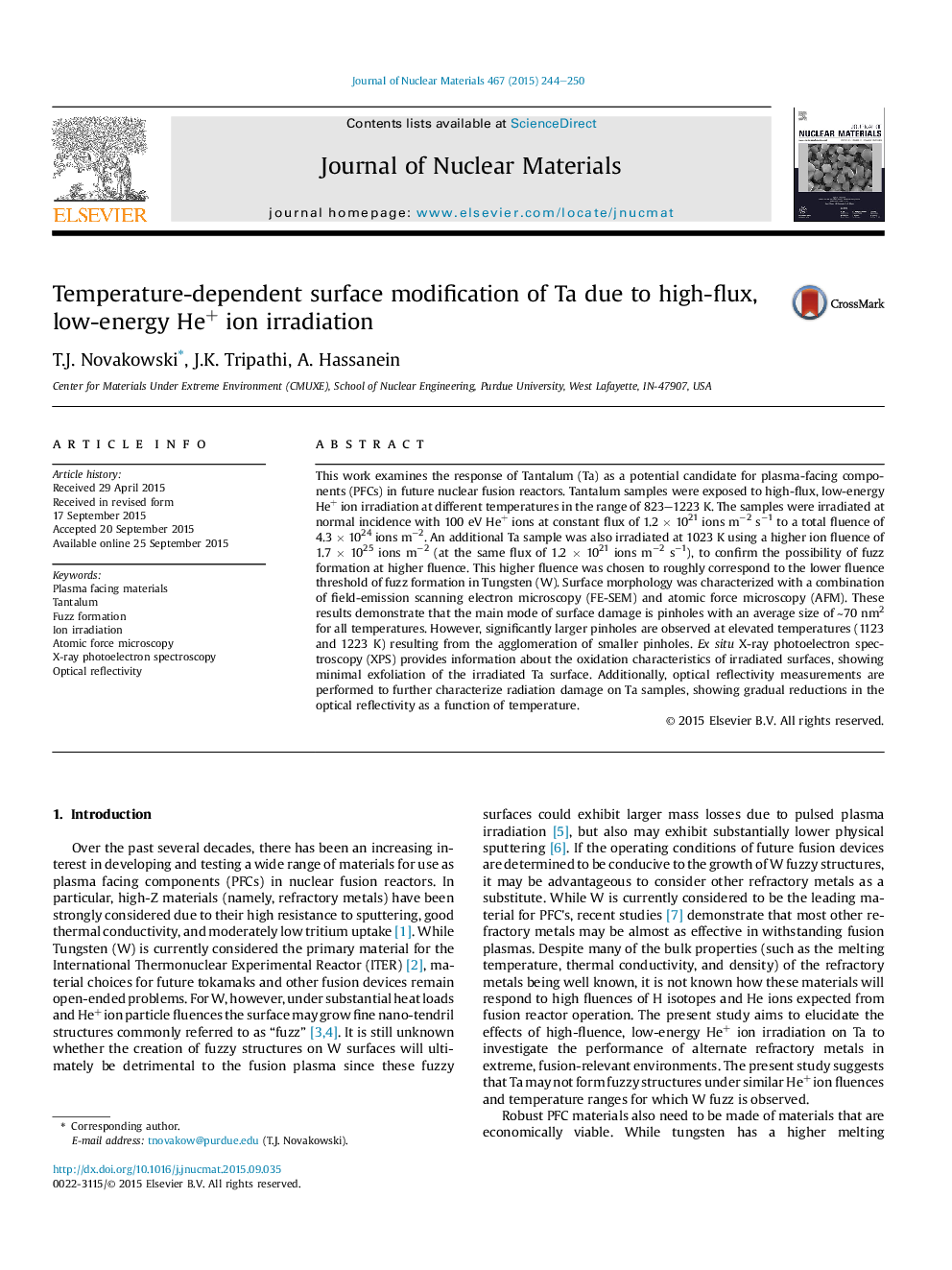| Article ID | Journal | Published Year | Pages | File Type |
|---|---|---|---|---|
| 1564881 | Journal of Nuclear Materials | 2015 | 7 Pages |
This work examines the response of Tantalum (Ta) as a potential candidate for plasma-facing components (PFCs) in future nuclear fusion reactors. Tantalum samples were exposed to high-flux, low-energy He+ ion irradiation at different temperatures in the range of 823–1223 K. The samples were irradiated at normal incidence with 100 eV He+ ions at constant flux of 1.2 × 1021 ions m−2 s−1 to a total fluence of 4.3 × 1024 ions m−2. An additional Ta sample was also irradiated at 1023 K using a higher ion fluence of 1.7 × 1025 ions m−2 (at the same flux of 1.2 × 1021 ions m−2 s−1), to confirm the possibility of fuzz formation at higher fluence. This higher fluence was chosen to roughly correspond to the lower fluence threshold of fuzz formation in Tungsten (W). Surface morphology was characterized with a combination of field-emission scanning electron microscopy (FE-SEM) and atomic force microscopy (AFM). These results demonstrate that the main mode of surface damage is pinholes with an average size of ∼70 nm2 for all temperatures. However, significantly larger pinholes are observed at elevated temperatures (1123 and 1223 K) resulting from the agglomeration of smaller pinholes. Ex situ X-ray photoelectron spectroscopy (XPS) provides information about the oxidation characteristics of irradiated surfaces, showing minimal exfoliation of the irradiated Ta surface. Additionally, optical reflectivity measurements are performed to further characterize radiation damage on Ta samples, showing gradual reductions in the optical reflectivity as a function of temperature.
